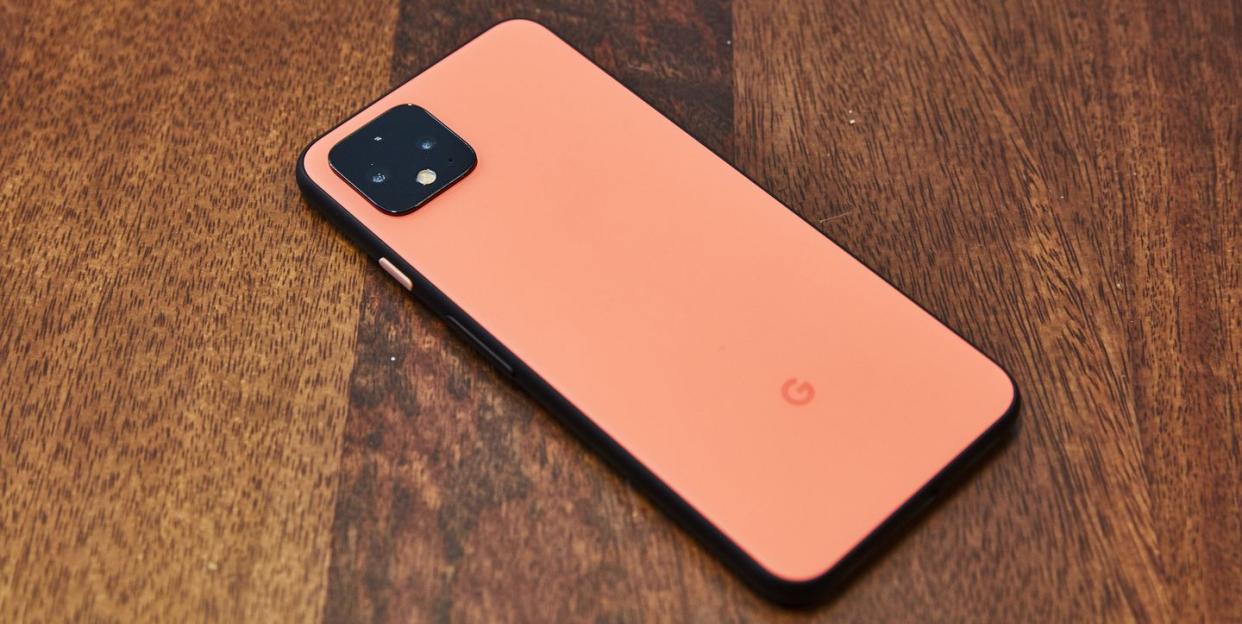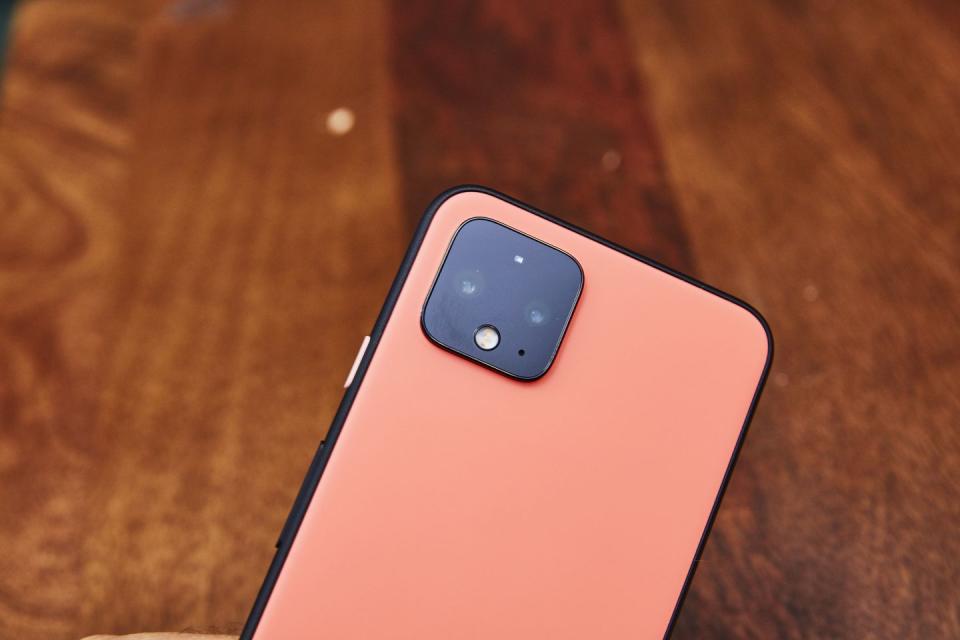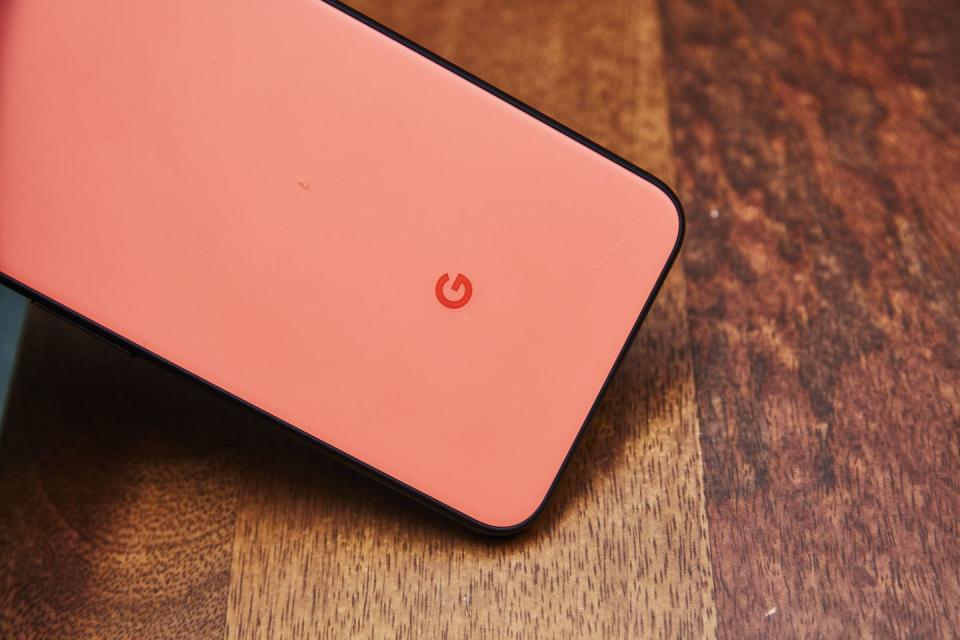Google's Pixel 4 Takes a Shaky First Step Into the Future

Every phone wants to be the future—it's good business. Create a feature everyone wants, and you become the Next Hot Thing.
With the Pixel 4, Google's tried to take a few steps in to the future. It's a phone that can sense as you approach, then unlocks itself with just your face, and then lets you navigate its super-smooth 90hz display with just a wave of your hand. It's impressive how much newness is packed inside here.
But in its rush to push things forward, the Pixel 4 fumbles a few smartphone basics which keeps Google's latest $800 phone from being the best phone money can buy.
What the Pixel 4 Does Right

Where Apple and Samsung treat their smartphones like they're precious gifts from the gods, Google isn't afraid to have some fun with color. This year it's the Pixel 4's limited edition Oh So Orange color palette. It's eye-popping, unexpected, and you won't see another phone like it, which is kind of the point.
It's also improved its display to OLED at 90hz display, meaning the Pixel 4's animations and overall operation are super smooth and using the device from a software standpoint is a joy. Google gets software. That hasn't changed.
It's camera remains best in class. Although it doesn't have three lenses like the iPhone 11 Pro (despite its large size), it does come with a telephoto lens along side a standard lens. This means you can zoom for days and still have a great quality photo. It'd be nice to have a ultra-wide angle lens, but there's always next year.
Along with software additions like HDR+ Live (so you get a hyper-accurate portrayal of what a photo will look like from your viewfinder) and improved Night Sight and white balance controls. Google hangs tough with Apple for that best camera crown.
What Pixel 4 Doesn't Get Right

But not everything is good news with the Pixel 4. I noted in my Pixel 3a review that one of the things I loved about that phone was it was willing to go back on a few controversial hardware decisions, mainly by adding in a headphone jack. Unfortunately, Google's re-removed the it for the Pixel 4, which feels like taking away a good feature for a phone that's double the price. As an extra turn of the knife, Google also doesn't include a headphone jack adapter, so hopefully you have one lying around (that still works).
And it isn't just the headphone jack that's missing in action, so is the fingerprint sensor. Instead, Google's opted for Face Unlock, a face-based biometric sensor much like Apple's Face ID, in order to unlock your phone. Despite a few hiccups (I weirdly had to reset my face data once after my phone died), the feature works crazy fast, like blink-and-you'll-miss-it fast. Thanks in part to Motion Sense (we'll get to that in a minute), the Pixel 4 senses when you're lunging for the phone and immediately kicks on its face-reading tech. These two things combined makes the lockscreen almost invisible.
This is all great, but there are a few concerns here, too. For one, your face is less safe than your fingerprint or a password. While that may sound weird, a few outlets have reported that Face Unlock works when you are asleep. After a few tests of my own, this turns out to be true. While 99 percent of the time this won't matter (unless you have a very creepy and boundary-breaking significant other). Luckily, Google's announced that they'll require eye detection after an update, but who knows how that'll affect Face Unlock's speed.
Also for the standard-size Pixel 4, Google shrank the battery capacity to 2,800 mAh, a odd choice considering the additional sensing going and that 90hz display that draws some power. Compared to the Pixel 3a XL (my previous phone) or even the Pixel 3, I've definitely felt a difference using the phone day to day. I'd consistently forget to charge my phone overnight and have more than enough to keep me going well into the next day with the 3a XL. With the Pixel 4, it's tough to get to bedtime even with moderate use.
For an $800 phone, the battery is a basic feature that needs to deliver—and the Pixel 4 doesn't.
Not a Jedi, Yet

Finally, there's Motion Sense. When reviewing new technologies, it's hard to forecast exactly what tech will go mainstream and what others will fizzle into nothingness. For Motion Sense, the jury is still out. Right now this new feature in the Pixel 4, one of the first phones to have such radar-sensing capabilities, feels a bit half-baked.
The way it works is a sensor, embedded in the upper-bezel, senses when your hand moves back and forth across the display. In a perfect world, this allows you to use minute actions away from the touchscreen to control your phone. It makes you feel like a smartphone Jedi, able to manipulate the digital pixels before you with just a wave of your hand—when it works.
But at best, Motion Sense is an entry-level Padawan rather than a seasoned Jedi Master. For one, there's really only one use for it, and that's swiping through my Spotify playlists to skip songs, and even then it worked with around a 75 percent success rate.
Yes, there are a few other small things you can do—there's an app that lets you wave to Pokémon for example—but other than that, it's incredibly limited. Much like its hyper-fast biometric login, it feels like the future when it works, but a future that isn't quite ready yet.
That isn't to say including radar in the Pixel 4 is some sort of embarrassing mistake. In fact, when it works your mind runs wild with possibilities, it just needs a bit more time–and app support—to grow into its own.
A Tough Price to Pay
So where does that leave us. For $800 ($900 for the Pixel 4 XL), you get a 64GB (or a 128GB if you part with another $100) phone in orange, white, or black that in many regards is much like all the other top-tier phones out there. If you want the very best camera and best Android experience, the Pixel 4 is for you (though I'd suggest the XL if you can swing it for slightly better battery life).
But if you don't have $800 just lying around, the Pixel 3a remains a phenomenal deal and you can rest easy knowing you're not missing out on anything astonishingly groundbreaking. In fact, you gain two features (from a certain point of view) with the included headphone jack and fingerprint sensor. Slower processor? Yes. Cheaper display? Yep. But it'll at least last you the day without worry. For the price, it's still the one I'd pick
The Pixel 4 wants to be the future, but that future hasn't arrived.
You Might Also Like

